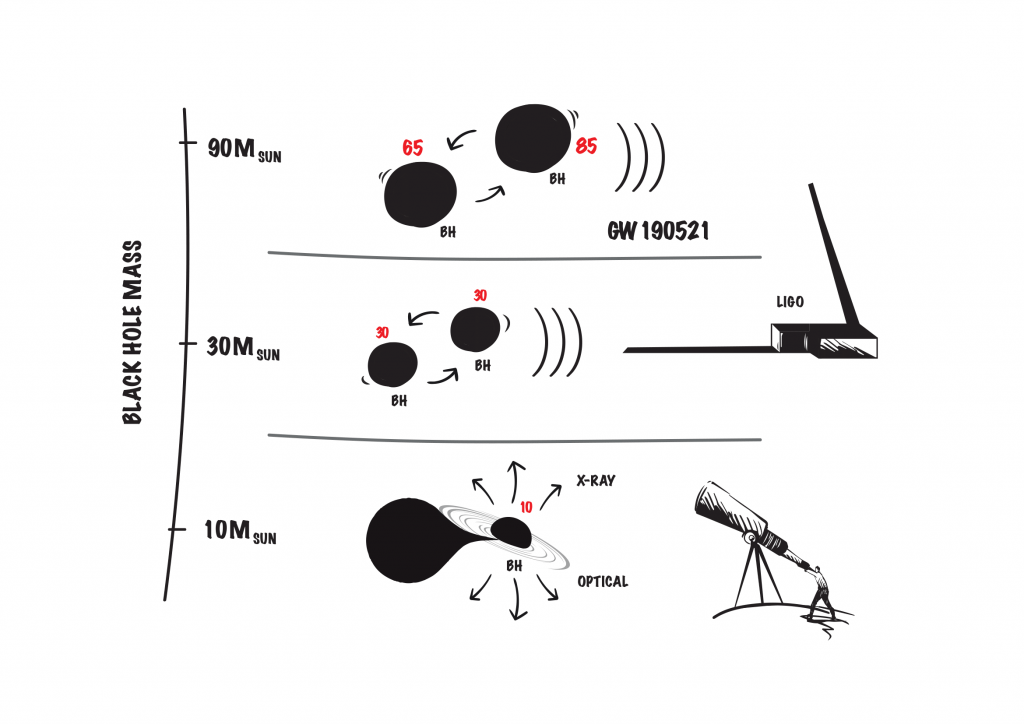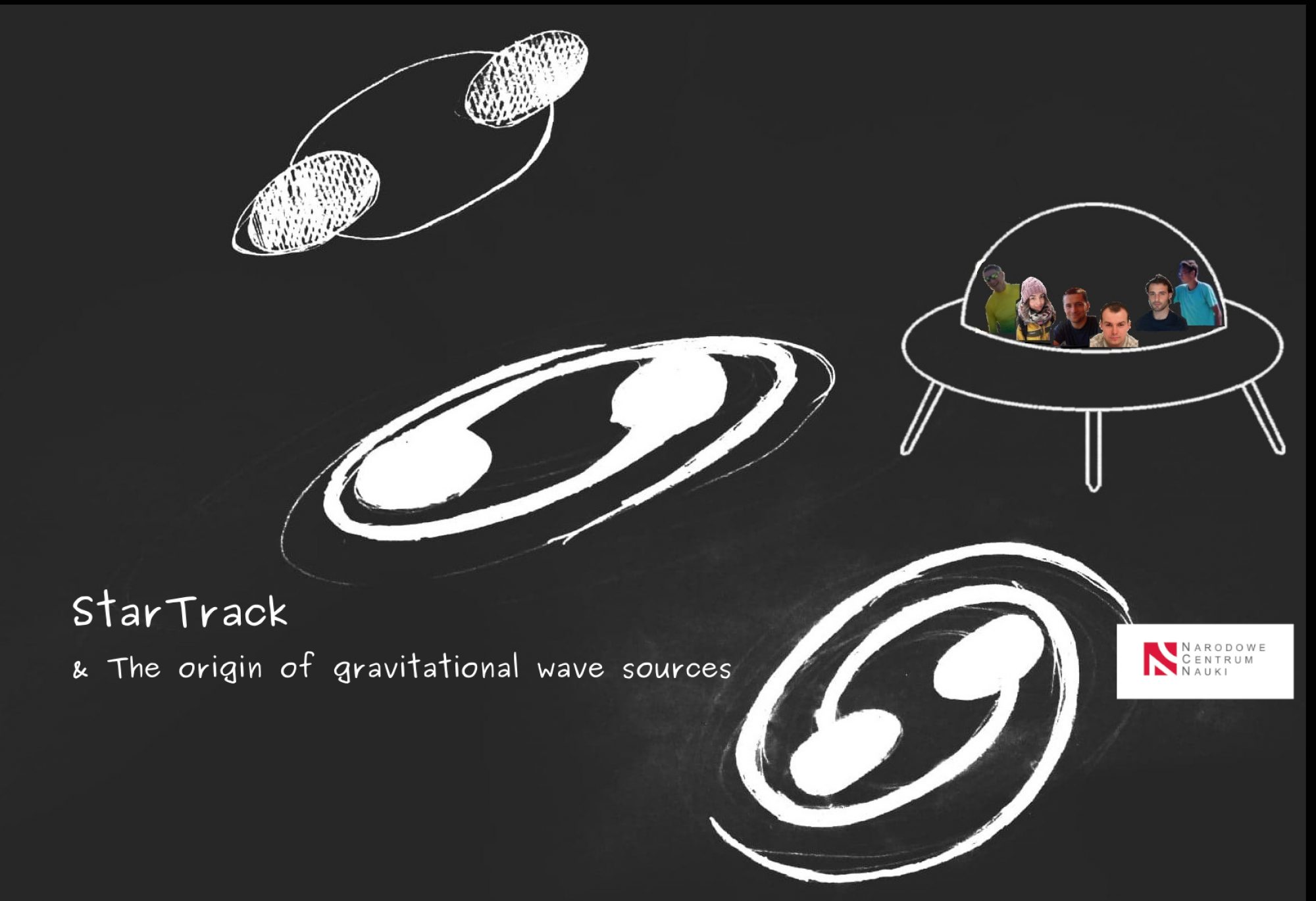Black holes, by definition, are invisible. Until the first one was discovered in constellation of Cygnus about 50 years ago. If a black hole exists alone it is truly invisible, as it does not emit any electromagnetic radiation. However, if black hole happens to have a close companion, say a star like our Sun, it will swallow companion matter/atoms into its center. This creates a visible signature, as such atoms falling into black hole emit X-rays that we can detect. About 50 such binary systems are known (black hole + stellar companion) with black holes weighting typically about 10 times more than the Sun.
About 5 years ago another way that does not involve electromagnetic radiation (light, X-rays, infrared…) of probing the cosmos has opened. American observatory LIGO has detected collision of two black holes in gravitational-waves. Gravitational-waves vibrate through the fabric of space-time itself, changing (on a ridiculously microscopic scale) distances between objects. Yet changes that we can measure on Earth. Until today another 50 such collisions have been reported by LIGO with typical black hole masses of about 30 times of the mass of Sun (Msun). One of this collisions stands out: two black holes, one with mass of 66 Msun and one with mass of 85 Msun. Stellar evolutionary calculations, that follow life of stars and their deaths in which black holes are born, did not allow for the formation of black holes more massive than 50 Msun. Yet here we are!
It was believed that the largest stars that could have formed such massive black holes are totally disrupted in powerful supernova explosions leaving nothing behind but shells of expanding gas that used to be a star. The discovery prompted a very quick revision of stellar evolutionary calculations, in particular the amount of energy that is produced in nuclear fusion that power stars and the efficiency of mixing of elements in stellar interiors. These revisions allow potentially to increase the maximum mass of a black hole from 50 Msun to 90 Msun. Folded with specific evolution of binary systems of stars that form black hole collisions, Chris Belczynski has shown in his recent study that formation of a 66+85 Msun system, like the one detected by LIGO, is possible and can not be excluded. The binary star scenario adds to the growing pool of proposals that have been put forward to explain the formation of the most massive double black hole binary known to date.
Link to paper:
https://ui.adsabs.harvard.edu/abs/2020ApJ…905L..15B/abstract

